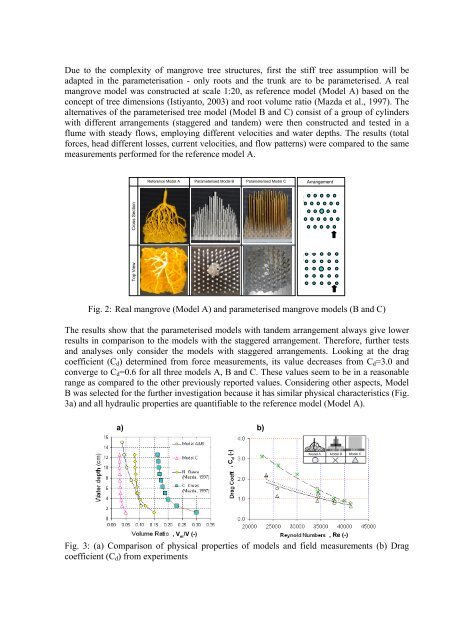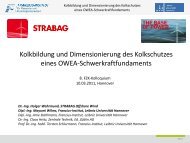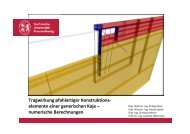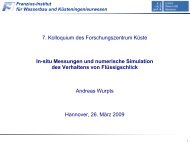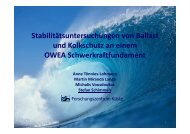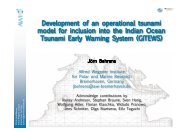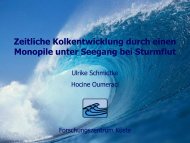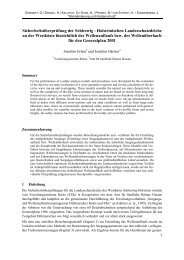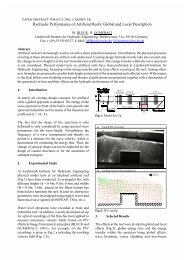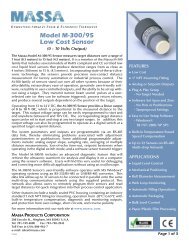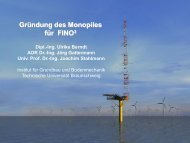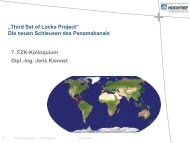DAMPING TSUNAMI AND STORM WAVES BY COASTAL ... - FZK
DAMPING TSUNAMI AND STORM WAVES BY COASTAL ... - FZK
DAMPING TSUNAMI AND STORM WAVES BY COASTAL ... - FZK
You also want an ePaper? Increase the reach of your titles
YUMPU automatically turns print PDFs into web optimized ePapers that Google loves.
Due to the complexity of mangrove tree structures, first the stiff tree assumption will be<br />
adapted in the parameterisation - only roots and the trunk are to be parameterised. A real<br />
mangrove model was constructed at scale 1:20, as reference model (Model A) based on the<br />
concept of tree dimensions (Istiyanto, 2003) and root volume ratio (Mazda et al., 1997). The<br />
alternatives of the parameterised tree model (Model B and C) consist of a group of cylinders<br />
with different arrangements (staggered and tandem) were then constructed and tested in a<br />
flume with steady flows, employing different velocities and water depths. The results (total<br />
forces, head different losses, current velocities, and flow patterns) were compared to the same<br />
measurements performed for the reference model A.<br />
Cross Section<br />
Top View<br />
Reference Model A Parameterised Model B Parameterised Model C<br />
Arrangement<br />
Fig. 2: Real mangrove (Model A) and parameterised mangrove models (B and C)<br />
The results show that the parameterised models with tandem arrangement always give lower<br />
results in comparison to the models with the staggered arrangement. Therefore, further tests<br />
and analyses only consider the models with staggered arrangements. Looking at the drag<br />
coefficient (Cd) determined from force measurements, its value decreases from Cd=3.0 and<br />
converge to Cd=0.6 for all three models A, B and C. These values seem to be in a reasonable<br />
range as compared to the other previously reported values. Considering other aspects, Model<br />
B was selected for the further investigation because it has similar physical characteristics (Fig.<br />
3a) and all hydraulic properties are quantifiable to the reference model (Model A).<br />
a) b)<br />
, C d (-)<br />
, V m /V (-) , Re (-)<br />
Fig. 3: (a) Comparison of physical properties of models and field measurements (b) Drag<br />
coefficient (Cd) from experiments


